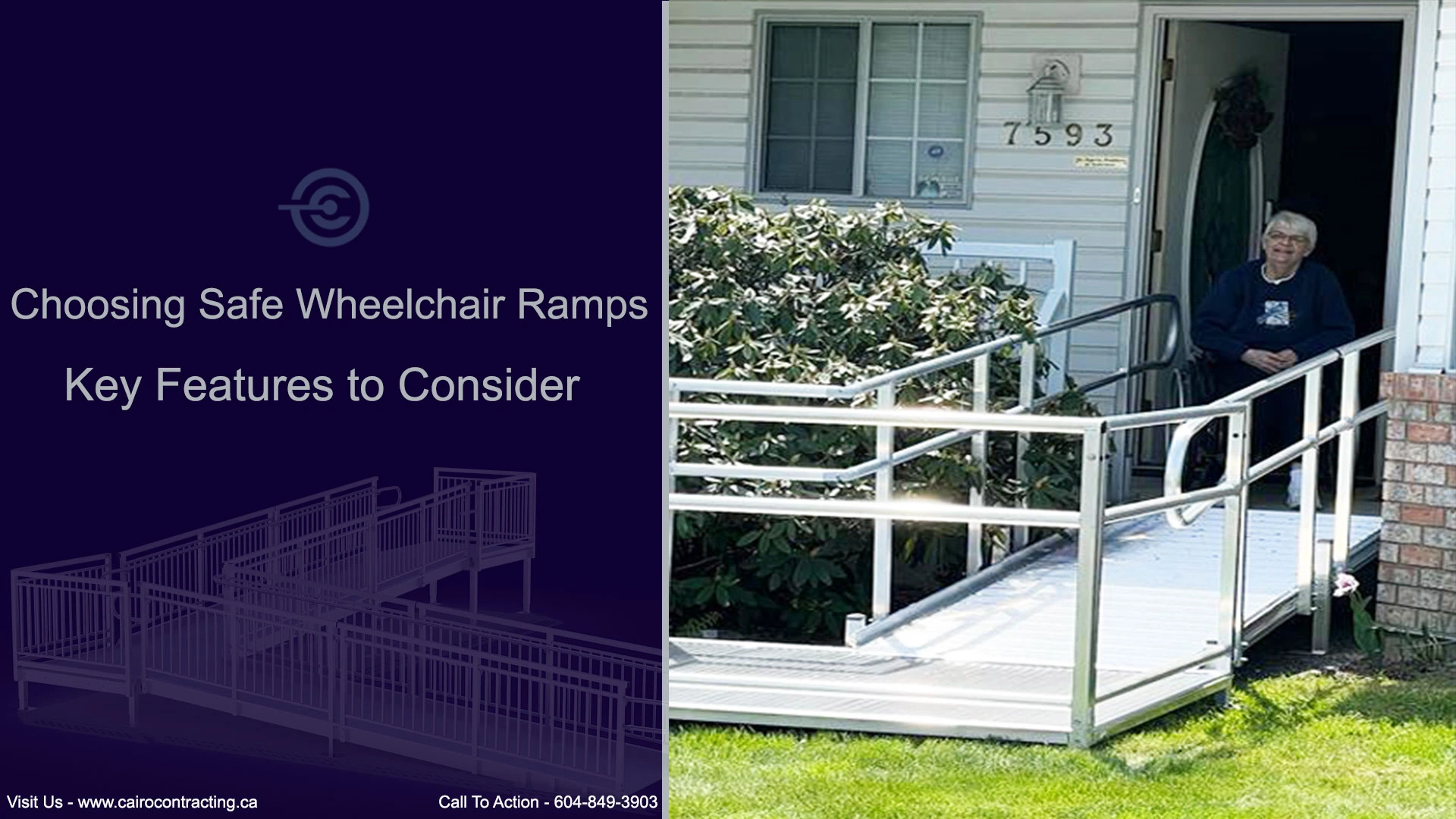When choosing a safe aluminum wheelchair ramp, it’s important to focus on several key features to ensure both durability and accessibility. Here are the primary considerations:

1. Weight Capacity
- The Aluminum Wheelchair ramps are manufactured to accommodate the weight of both the wheelchair and its users. Most wheelchair ramps can support between 600 to 850 pounds, but it’s best to check the specifications for the exact weight limit.
2. Ramp Length and Slope
- The length of the aluminum wheelchair ramp is crucial for creating the right slope. A general guideline is that for every inch of rise, you need a ramp that’s at least 12 inches long (1:12 ratio). This ensures a safe, gradual incline that is easier to navigate.
- Adjustable mobility ramps may be ideal if you’re uncertain about the rise or need flexibility.
3. Surface Texture
- The surface of the wheelchair ramp should be slip-resistant, especially in wet conditions. Look for mobility ramps with a textured surface, grooves, or even anti-slip coatings to reduce the risk of accidents.
4. Portability and Storage
- If you need to move the aluminum wheelchair ramp frequently, choose a lightweight and foldable design. Some ramps can be folded into sections, making them easier to store when not in use.
- For permanent installations, consider a heavier, non-foldable mobility ramp for greater stability.
5. Material Quality
- Aluminum is lightweight but durable, rust-resistant, and can withstand various weather conditions. Look for high-quality aluminum alloys that provide strength without adding excessive weight.
- Make sure the aluminum wheelchair ramp is weather-resistant to ensure it will perform well in both rainy and dry conditions.
6. Width of the Wheelchair Ramp
- The mobility ramp should be wide enough to accommodate the wheelchair, including any accessories (e.g., footrests, armrests). A width of at least 36 inches is often recommended for most standard wheelchairs, but you should consider larger widths for power chairs or scooters.
7. Edge Protection
- Curbs or side rails can help prevent the wheelchair from rolling off the side of the ramp. Some wheelchair ramps come with integrated side rails, while others offer them as an optional addition.
8. Installation and Stability
- Ensure the mobility ramp is securely anchored or designed to be safely positioned at the entryway. Some ramps have adjustable feet or brackets that allow for a more stable setup on uneven ground.
- If it’s a permanent installation, it may be necessary to bolt the aluminum wheelchair ramp down for added stability.
9. Certification and Safety Standards
- Always look for mobility ramps that comply with ADA (Americans with Disabilities Act) standards, which specify the slope, width, and other design elements to ensure safe use. Also, verify that the mobility ramp meets ANSI (American National Standards Institute) or other safety certifications.
10. Cost
- Aluminum ramps can range in price depending on their size, features, and brand. Balance your budget with the features you need for long-term reliability, safety, and comfort.
By focusing on these factors, you can choose an aluminum wheelchair ramp that ensures both the safety and convenience of its user. Reach out to the experts of Cairo Contracting to book a Free Home Assessment for you today to get a quote.